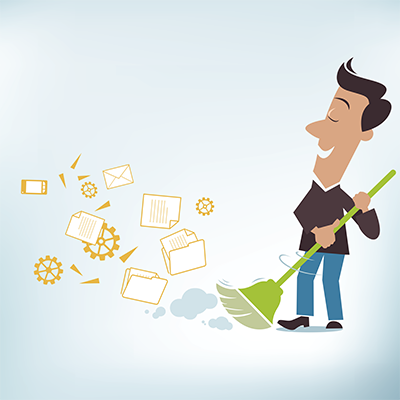Perhaps the most neglected portion of any website is your media gallery. A quick glance through the files often reveals a confusing collection of old photos, out-of-date documents, and multiple copies of the same file. Regardless of what software your website is built in, here are a few tips that will help you keep your media organized and useful.
Use Clear Names
Before you upload a photo, Word doc or PDF, give it a clear-language file name. For images, use a name that describes the photo and includes a relevant date (ie; gala-reception-2019.jpg). For PDFs and Word files, use the document title in the name with a date and/or version number. That will help you keep track of subsequent updates to those files, will help you search for them in your media library, and will make it easier to know which ones are old or irrelevant at a glance.
Describe It
If your content management system allows, include a good description of the media resource in the file’s description field. For images, include information such as who shot an image, who is in an image, and when it taken. For files, include a brief summary of what’s in the file, along with an author if applicable. For all resources, include a note indicating which page or section of the website this resource should live.
Use Categories and Tags
Many content management systems, including WordPress, allow you to assign and sort your media assets by categories and tags, just like you do with blog post content. If you create a logical category/tag system that’s easy to remember and easy for others to follow, and if you’re consistent in using it, you’ll benefit from easy instant organization.
Keep It Small
We see a lot of media galleries cluttered with many version of the same image in many different file sizes. This can happen when you upload a high-resolution image and then use your content management system to downsample or resize the image. It also happens when you upload an image and then decide that image needs cropping. Save yourself the time and hassle by resizing your image before you load it to the site using Photoshop Elements or Google’s free image editing tool. You’ll get the added benefit of preventing someone else from bogging down your site by accidentally reusing one of those unnecessarily high resolution resources.
Delete, Delete, Delete
If you have to edit an image in your media gallery, remember to delete the unneeded version. This will save space on your server, will keep your media gallery tidy, and will prevent someone else from using the wrong image.
It’s also a good idea to schedule a yearly media closet-cleaning to clear out all of the old content. Pick a time when you and your website are the least busy — just after the new year works pretty well for a lot of nonprofits.
Don’t Forget the Alt Tags
While you’re at it, make sure everything has an alt tag, a short description of the image that explains what you can see (ie; photo of our volunteers at the local soup kitchen). This step is critical to improving your SEO rankings. It’s also just the right thing to do. Without that alt tag, people using accessibility tools will have trouble “reading” your image or understanding its relevance to the content.
Take Pride in Your Work
We know that everything suggested here can feel tedious and easy-to-skip when you’re busy doing a hundred other things. But, if you can establish a pattern and remain consistent, the long-term payoff will be worth it because it will save you time and frustration later and will allow your website pages to load faster.
